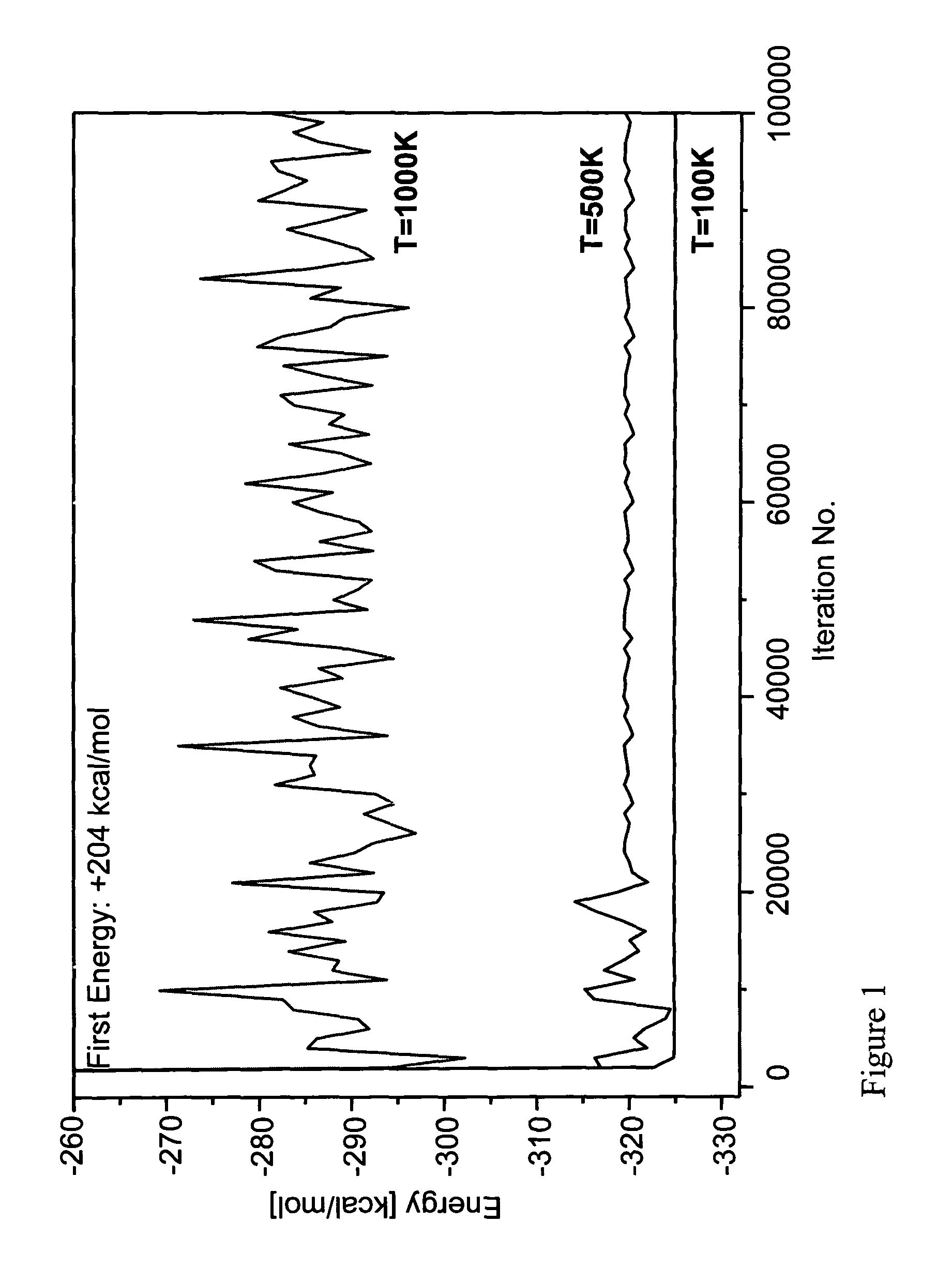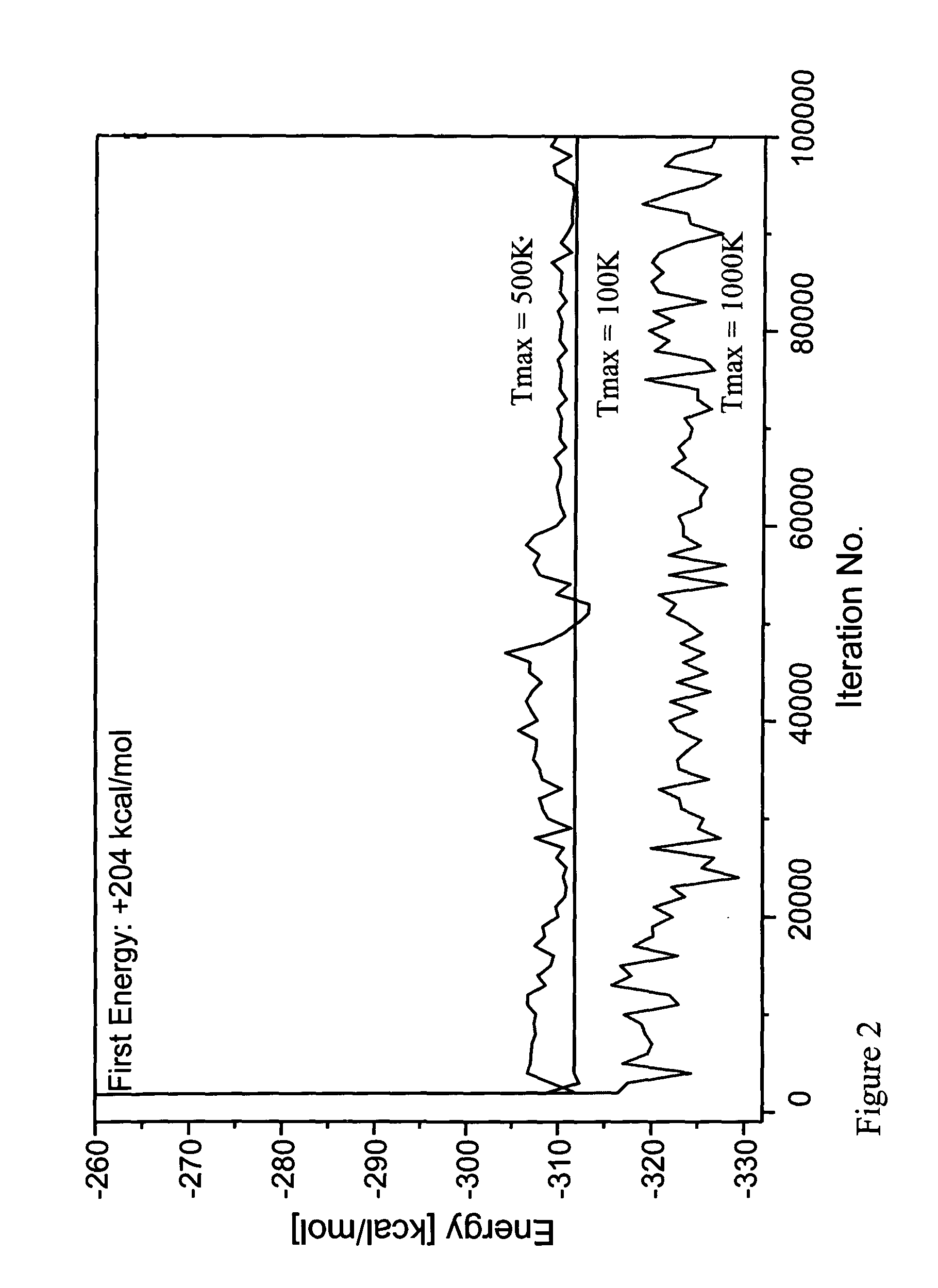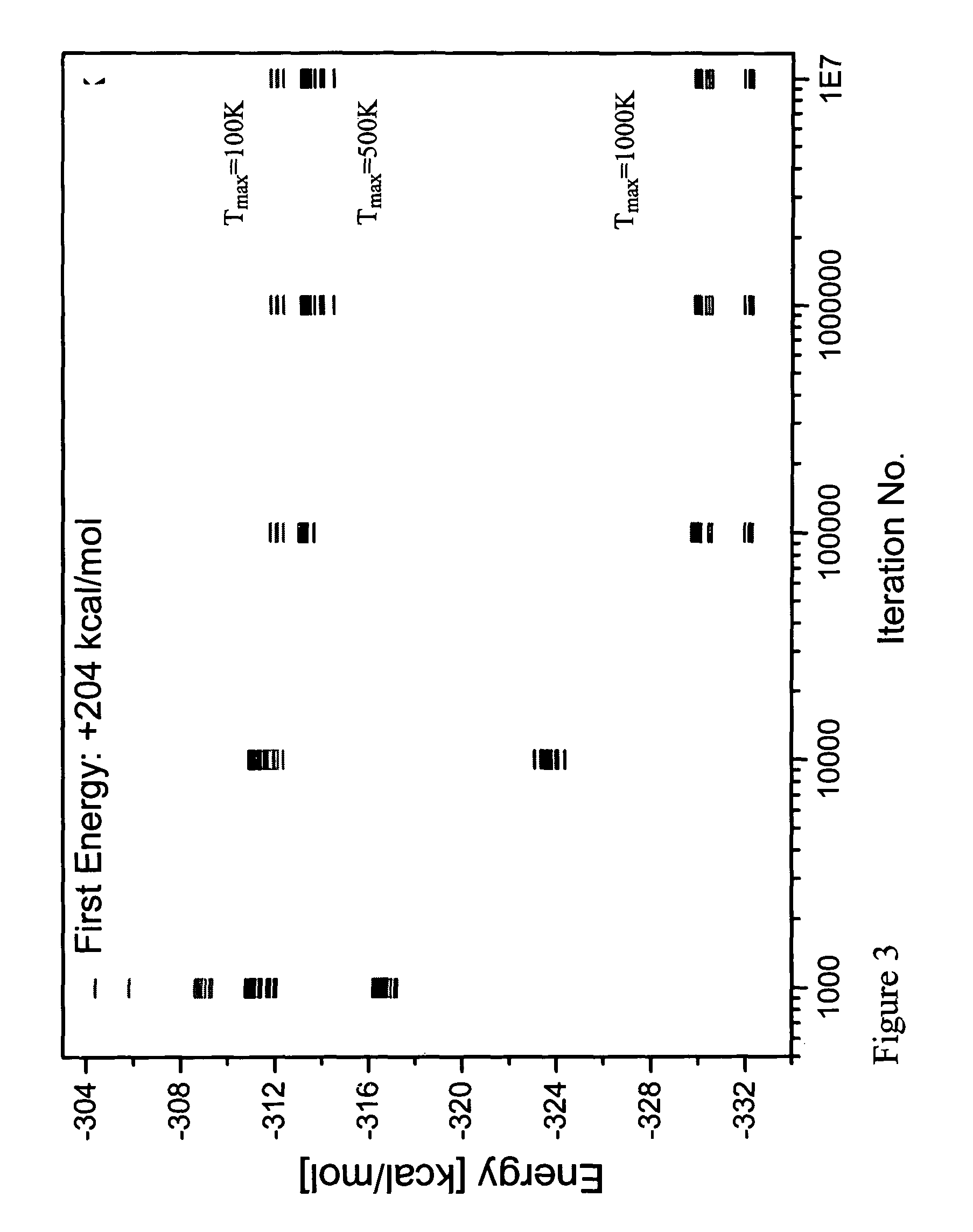Method and system for predicting amino acid sequences compatible with a specified three dimensional structure
a three-dimensional structure and amino acid sequence technology, applied in the field of inverse protein folding for de novo protein design, can solve the problems of de novo design of stable and unique proteins, unfulfilled prediction understanding of hydrophobic core packing in proteins, and a difficult problem
- Summary
- Abstract
- Description
- Claims
- Application Information
AI Technical Summary
Problems solved by technology
Method used
Image
Examples
specific examples
[0095]The present invention is defined by the claims, the contents of which are to be read as included within the disclosure of the specification, and will now be described by way of example with reference to the accompanying Figures.
GENERAL
CHARMM Minimization and Molecular Dynamics
[0096]The comparison between the all-atom 3D structure of the designed protein (after minimization of its side chains) with its structure after molecular dynamics simulation is carried out in the following specific Examples using the CHARMM molecular dynamics program [version 29, Brooks B. R. et al. (1983) ibid.]. Further, the comparison between the averaged energy of the designed protein after dynamics with the energy of the native protein is carried out using CHARMM forcefield [Mackerell A. D. et al. J. Phys. Chem. 102:3586-3616 (1998)]. The minimization and the molecular dynamics are performed when the protein is embedded in a water sphere. For native proteins, the coordinates are based on the informat...
example 1
Zif268 as a Target Fold
[0098]In order to examine the method according to the invention the ββα motif typified by the zinc finger DNA binding module in the zinc finger protein, Zif268 was used. Zif268 is a well recognized protein which has the sequence shown in SEQ. ID NO. 1. This protein is small enough to be both computationally and experimentally retractable, yet large enough to form an independently folded structure in the absence of disulfide bonds or metal binding. Although this motif consists of fewer than 30 residues, it does contain sheet, helix and turn structures. By the method and system of the invention the entire amino acid sequence: the buried core, the solvent exposed surface and the boundary between core and surface, except for the Gly27, which was not mutated during the simulation, was computed. The input coordinates are those of residues 33-60 of the native proteins obtained from the X-ray structure coordinate of Zif268 immediate early gene (krox-24) complex with a...
example 2
Gβ1 as a Target Fold
[0138]The core of β1 domain of Streptococcal protein G (Gβ1), a 56 residue protein, was examined. Gβ1 is derived from a larger multi-domain cell surface protein that functions with high affinity binding to the Fc region of IgG. It comprises six β-strands and one α-helix. An extremely hyperthermophilic variant of the β1 domain of Streptococcal protein G was already reported by Mayo and collaborators(14,15).
[0139]2.1 Solvent Accessibility for Gβ1 Domain
[0140]Solvent accessibility was evaluated as described in Example 1. A comparison of the results obtained by the method of the present invention and that of Malakauskas and Mayo (M&M(15), using mainly the Connolly algorithm referred to hereinbefore) is presented in FIG. 6. As can be seen from this Figure, 22 positions were found to be exposed in both cases, 11 were found to be buried and 10 in an intermediate level of solvent accessibility. The 13 remaining residues were classified differently in the two methods. In ...
PUM
 Login to View More
Login to View More Abstract
Description
Claims
Application Information
 Login to View More
Login to View More - R&D
- Intellectual Property
- Life Sciences
- Materials
- Tech Scout
- Unparalleled Data Quality
- Higher Quality Content
- 60% Fewer Hallucinations
Browse by: Latest US Patents, China's latest patents, Technical Efficacy Thesaurus, Application Domain, Technology Topic, Popular Technical Reports.
© 2025 PatSnap. All rights reserved.Legal|Privacy policy|Modern Slavery Act Transparency Statement|Sitemap|About US| Contact US: help@patsnap.com



